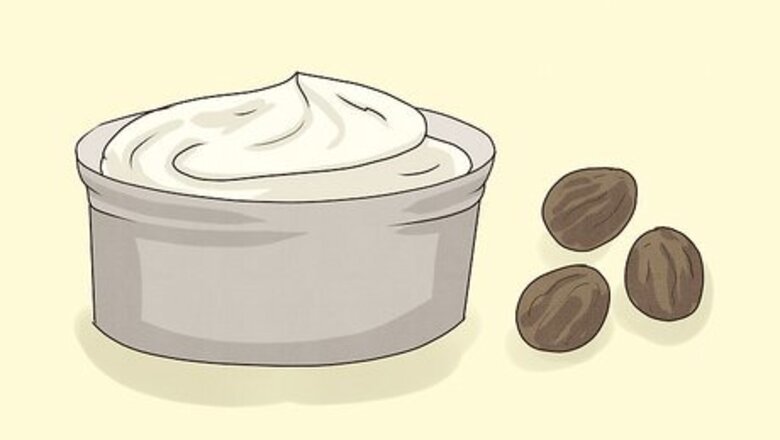
views
Using Topical Treatments
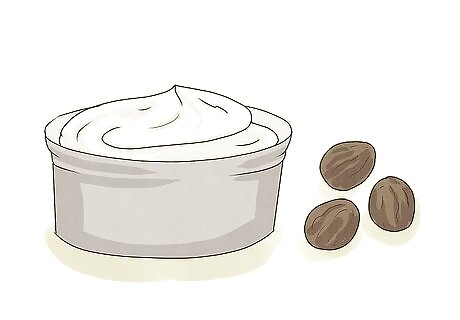
Apply shea butter. One option that some people have luck with is shea butter. It may reduce inflammation and it provides lots of hydration for your skin. Try pure shea butter, or pick a lotion with shea butter in it that you can apply every day. Shea butter is a nut derivative, so it isn’t a good idea to use shea butter if you’re allergic to nuts.
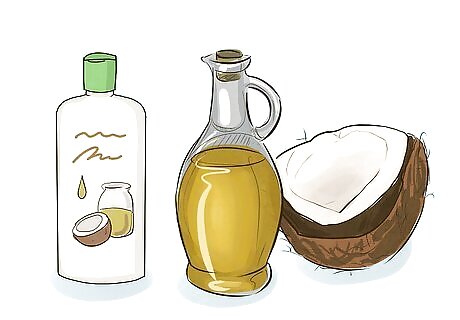
Use coconut oil. Moisturizers or lotions with a coconut oil base are excellent for hydrating skin and reducing stretch marks. Pure coconut oil can be purchased in the cooking oil section of any grocery store. Massage your skin with solid coconut oil or a coconut oil-based lotion bar.

Try retinoic acid cream. Retinoic cream has been shown to help with stretch marks. However, it works best on ones that have just appeared. It likely helps by increasing collagen production, which in turn helps with the appearance of your skin.Retinoic Acid Cream Instructions and WarningsDo not use these products if you are breastfeeding or pregnant, as they can have bad side effects for your baby.You'll need a prescription to get products such as Retin-A, Renova, and/or Avita, but other products are available over the counter.Your doctor will tell you how often to apply these products. You should read the directions on the container for any over-the-counter products.

Try a combination of glycolic acid and ascorbic acid. These creams together can help with the elasticity of the skin and reduce the appearance of stretch marks over time. Generally, these creams can begin to work in as few as three months when you apply them every day. These ingredients are available over the counter, but you may need to buy them separately.

Use a chemical peel containing trichloroacetic acid. Chemical peels can also be helpful in reducing the appearance of stretch marks. Generally, though, they work best in conjunction with other treatments, such as microdermabrasion. Usually, it's best to let a professional perform a chemical peel, although you can find over-the-counter products. Once you have the peel done, your skin will peel off over the course of a few days, which can reduce the color of your stretch marks. You may need more than one treatment.
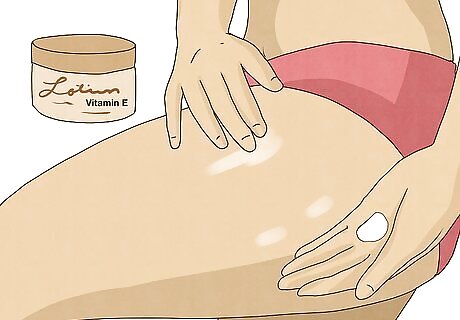
Minimize the appearance of stretch marks with vitamin E. Applying a lotion every day that has vitamin E may help reduce your stretch marks. It's not likely to make them go away, but it can help improve how your skin looks over time. Vitamin E can help stretch marks in a few ways. It helps protect your skin from damage, which can reduce the appearance of the marks. Also, it is also anti-inflammatory and an antioxidant. Vitamin E creams are available over the counter.
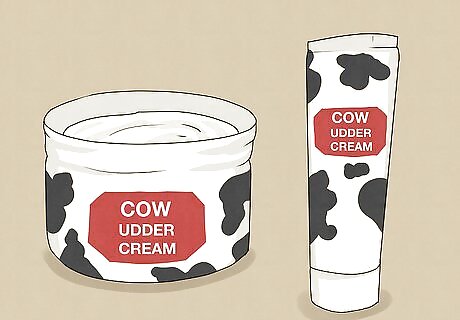
Try cow udder cream. Udder creams, such as Bag Balm and Udderly Smooth, are intensely hydrating lotions originally designed for use on cracked and irritated cow udders. These lotions are now widely available in drug stores for use as skin lotions, and they are especially useful for breastfeeding women and people with stretch marks. Udder creams can be used regularly to both reduce stretch marks and prevent new stretch marks from forming.
Trying Medical Interventions
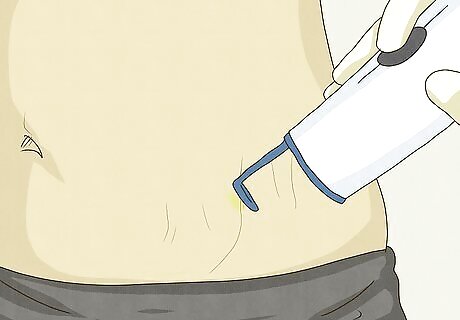
Ask about a pulsed dye laser for better elasticity. This type of laser treatment, also known as vascular laser treatment, may help reduce the appearance of stretch marks. It also increases collagen production, making your skin more elastic. Treatments begin at about $250 per session. It may take three to six sessions before you begin to see improvement, and more sessions may be necessary depending on the size of the area you are treating. You won't really have any recovery time, but you should stay out of the sun for a bit after a treatment.
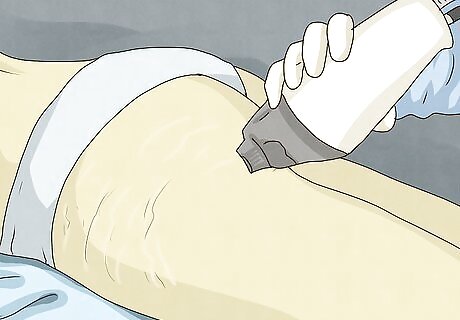
Discuss fractional laser treatment to help blend in stretch marks. Fractional laser therapy focuses on resurfacing smaller areas. The laser is aimed at the edges of stretch marks, smoothing over the surface of the skin. It adjusts the texture of the affected areas, making it appear more similar to the rest of your skin. This type of treatment can cost anywhere from $150 to $4,000, and you'll also likely need multiple sessions (at least three), though how many depends on how bad your stretch marks are. You'll need to stay out of the sun for a few days after the treatment.
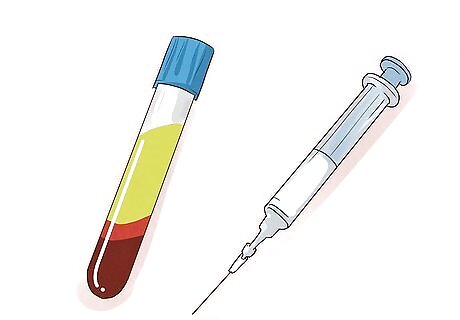
Get an injection of platelet-rich plasma for all types of stretch marks. With this technique, the doctor uses your own blood to treat you. They pull out the plasma and inject it into your stretch marks. In turn, the plasma increases skin growth and collagen production. This procedure can start at $600 or more. You can expect to be sore for a couple of days, but the recovery time is fairly quick. Sometimes, one session is enough to help, but it depends on your skin.
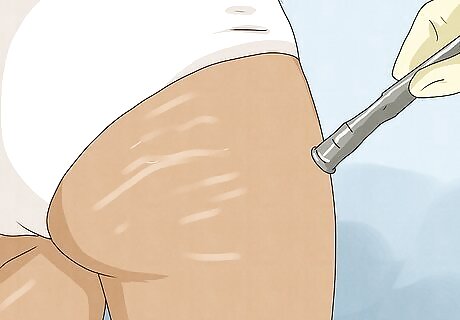
Ask about microdermabrasion for all types of stretch marks. Microdermabrasion basically means blasting your stretch marks with a fine crystalline powder. It's sort of like using sandpaper on your skin, but it is much gentler than it sounds. It helps buff away some of the appearance of stretch marks.Microdermabrasion Treatment DetailsAverage cost: $137Risks and Side Effects: redness, swelling, flaky skin in the days following the treatment, bruising, increased sensitivity to sun exposureProcedure: Microdermabrasion procedures involve either a small hand-held vacuum that streams tiny exfoliating crystals across your skin or a diamond-tip wand that exfoliates your skin.
Making Lifestyle Changes
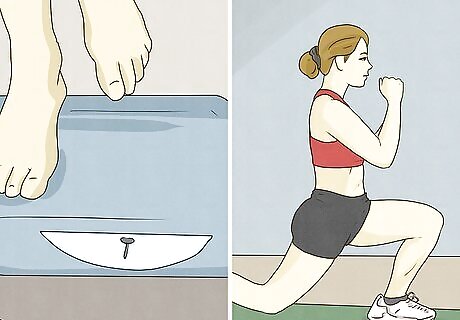
Maintain a healthy weight. The best way to not have stretch marks is to not get them in the first place. Try maintaining a healthy weight by exercising at least 150 minutes a week and eating a healthy diet full of fruits, veggies, whole grains, and lean protein.Foods to Eat to Help Stretch Marks FadeEating a nutrient-rich diet will ensure that your skin is getting the proper nutrition it needs to repair itself.Legumes: beans, peas, lentilsFoods with Zinc: peanuts, tofu, nuts, oatmeal, seedsFruits and veggies: oranges, avocados, blueberries, melons, sweet potatoes, cucumbers, tomatoes, leafy green vegetables, broccoli, bell peppersFoods with Omega-3 fatty acids: salmon, sardines
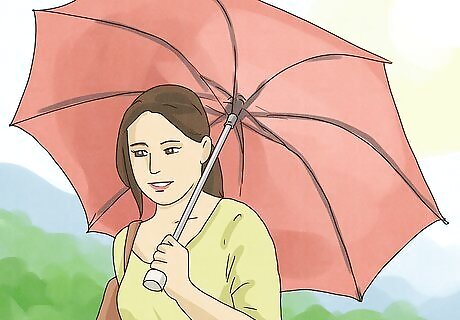
Avoid sun exposure. Being out in the sun can make stretch marks more noticeable. If you don't want to avoid the sun, simply cover up areas with stretch marks when you're outside.
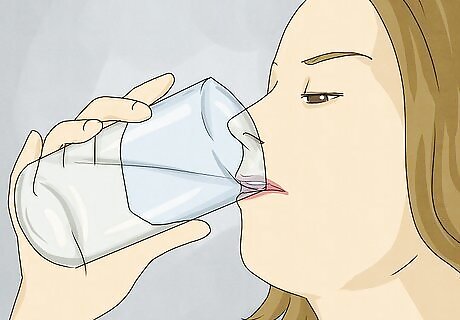
Stay hydrated. Hydrated skin is more elastic, so staying hydrated can help prevent you from getting new stretch marks. Drinking about 2 litres (68 fl oz) of water a day can help keep you hydrated.
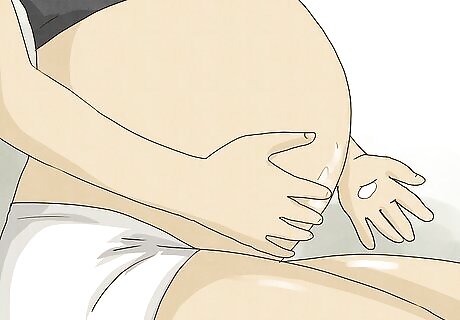
Moisturize your skin daily. You can prevent or minimize the development of new stretch marks by keeping your skin hydrated. This is especially important for pregnant women or people who are losing or gaining weight. Apply moisturizing oils and creams at least once a day, especially if you are pregnant. Apply moisturizers frequently enough that your skin does not begin to feel itchy or dry. These sensations are signs that your skin is dehydrated and might be starting to stretch. If you are pregnant, use safe products such as olive oil, cow udder cream, and shea oil or shea butter cream.
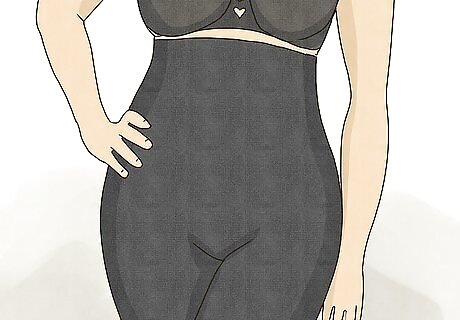
Wear supportive underwear. Gently supportive undergarments that cover your belly and thighs can be helpful for preventing or reducing stretch marks, especially if you are overweight. This is also a good alternative to expensive cosmetic surgeries, especially if the stretch marks cover a large area of skin.




















Comments
0 comment